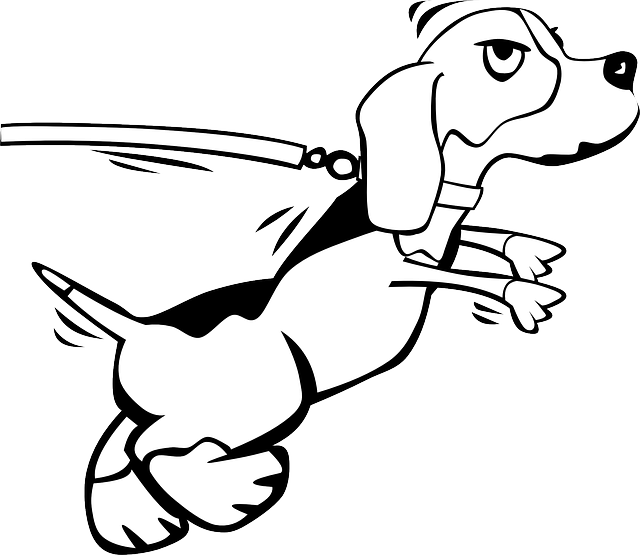To use a dog training collar effectively, start by selecting the appropriate collar for your dog’s size and behaviour. Follow the manufacturer’s instructions carefully for proper usage.
Training collars can be valuable tools in teaching your dog obedience and correcting unwanted behaviours. When used correctly, they can help reinforce commands and improve communication between you and your pet. It’s essential to understand how to use the collar properly to avoid any harm or discomfort to your furry companion.
With patience, consistency, and positive reinforcement, you can effectively incorporate a training collar into your dog’s training routine.
What Is Dog Training Collars
Dog training collars are valuable tools for pet owners seeking to train their dogs effectively. These collars come in various types and offer benefits when used correctly. Understanding the different types of training collars and their advantages can help in creating a positive training experience for both you and your furry companion.
Types Of Training Collars

There are several types of dog training collars available, each serving a specific training purpose:
- Flat Collars: Basic collars used for holding identification tags.
- Martingale Collars: Designed to prevent dogs from slipping out of the collar.
- Prong Collars: Used for training strong-willed dogs with correctional purposes.
- Shock Collars: Emitting mild electric shocks for behaviour correction.
Benefits Of Using A Training Collar
When used correctly, dog training collars offer the following benefits:
- Effective Training: Helps in teaching commands and correcting unwanted behaviours.
- Control: Allows better control over your dog in various situations.
- Safety: Ensures the safety of your pet by preventing dangerous behaviours.
- Bonding: Enhances the bond between you and your dog through consistent training.
Choosing The Right Collar For Your Dog
Choosing the right dog training collar is crucial to ensuring that your dog is comfortable and safe while training. There are various collars available on the market, each with different features and purposes. In this section, we will discuss the key factors to consider when choosing a collar for your dog.
Size And Fit Considerations
The first thing to consider when choosing a training collar for your dog is the size and fit. The collar should fit snugly around your dog’s neck without being too tight or too loose. A collar that is too loose can slip off during training, while one that is too tight can cause discomfort or even injury to your dog.
When measuring your dog’s neck, use a tape measure to determine the circumference of the neck. You should be able to fit two fingers between the collar and your dog’s neck. Additionally, be sure to check the weight and breed recommendations for the collar you are considering.
Understanding Different Features
Another important factor to consider when choosing a training collar for your dog is the different features available. There are several types of collars available, including choke collars, prong collars, and electronic collars.
A choke collar is designed to tighten around the dog’s neck when pulled, while a prong collar has metal spikes that dig into the dog’s neck. While both types of collars can be effective, they can also be dangerous if not used properly.
Electronic collars, also known as shock collars, use a small electric shock to discourage unwanted behaviours. While controversial, these collars can be effective when used correctly and under the guidance of a professional trainer.
It is important to research and understand the features of each type of collar before deciding. Additionally, consult a professional trainer or veterinarian to determine which type of collar is best for your dog.
Choosing the right training collar for your dog is essential to ensuring their safety and comfort during training. Consider the size and fit of the collar, as well as the different features available, before deciding. With the right collar and proper training, your dog can become a well-behaved and obedient companion.
Basic Principles Of Collar Training
When it comes to dog training, the use of a training collar can be an effective tool for teaching obedience and reinforcing positive behaviours. Understanding the basic principles of collar training is crucial for ensuring that it is used effectively and ethically.
Timing Is Key
In collar training, timing is crucial. It’s essential to deliver the correction or reward at the precise moment the behaviour occurs. This immediacy reinforces the connection between the action and the consequence, helping the dog understand what is expected. Delayed responses can confuse the dog and diminish the effectiveness of the training.
Consistency In Commands

Consistency in commands is paramount for effective collar training. Using the same verbal cues and hand signals for desired behaviours helps the dog understand what is expected of them. Inconsistency can lead to confusion and frustration, hindering the training process.
Setting Up The Training Collar
Properly setting up your dog training collar is essential for effective training. Fitting the collar properly and adjusting the intensity levels are crucial steps that require attention to detail. By following these steps, you can ensure that the collar is comfortable for your dog and provides the necessary stimulation for training.
Fitting The Collar Properly
When fitting the training collar, it’s important to ensure a snug and secure fit without being too tight. A properly fitted collar should allow you to fit two fingers between the collar and your dog’s neck. This ensures that the collar is not too tight, preventing discomfort for your dog during training sessions.
Adjusting The Intensity Levels

Before starting training, it’s crucial to adjust the intensity levels of the training collar. Start with the lowest intensity and gradually increase until you find the level that effectively captures your dog’s attention without causing distress. Always monitor your dog’s reaction to the stimulation and make adjustments as needed to ensure a positive training experience.
Training Techniques With A Collar
Training your dog with a collar can be an effective tool for improving their behaviour and obedience. When used correctly, a dog training collar can help reinforce positive behaviours and correct unwanted ones. Here are some training techniques to use with a collar to ensure effective results.
Positive Reinforcement
Positive reinforcement is a key technique when using a dog training collar. When your dog exhibits a desirable behaviour, such as sitting when commanded, reward them with treats, praise, or a toy. Pairing the positive reinforcement with the use of the collar helps the dog associate the behaviour with a positive outcome, making it more likely to be repeated in the future.
Correcting Unwanted Behaviours

When your dog displays an unwanted behaviour, such as jumping on guests, a dog training collar can be used to interrupt the behaviour. This can be done by using a gentle correction, such as a quick tug on the collar or a verbal command. It’s important to immediately redirect the dog to a more appropriate behaviour and reward them for complying.
Safety Precautions And Best Practices
Dog training collars can be a valuable tool in training your furry friend, but it’s important to use them safely and effectively. By following safety precautions and best practices, you can ensure that your dog’s training experience is positive and successful.
Monitoring Your Dog’s Reaction
When using a dog training collar, it’s crucial to closely monitor your dog’s reaction. Observe their body language and behaviour closely to ensure that they are responding appropriately to the collar’s stimulation. Pay attention to any signs of distress or discomfort, and be prepared to adjust the collar’s settings or discontinue use if necessary.
Avoiding Overcorrection
Overcorrection can be detrimental to your dog’s training progress. Avoid using the training collar to administer excessive or unnecessary corrections, as this can cause confusion and anxiety in your dog. Focus on using the collar to reinforce positive behaviours and provide clear, consistent guidance.
Troubleshooting Common Issues
To use a dog training collar effectively, troubleshoot common issues like improper fit, low battery, or incorrect settings. Ensure proper placement and gradual training to avoid discomfort for your pet. Seek professional guidance if you encounter persistent challenges for effective collar usage.
Training a dog can be a daunting task, especially when your furry friend isn’t responding to your commands. This is where a dog training collar is helpful. However, it’s not uncommon to experience some issues when using a training collar. In this article, we’ll discuss some common issues that you may encounter when using a dog training collar and how to troubleshoot them effectively.
Collar Malfunctions
One of the common issues with dog training collars is malfunctioning. This can be frustrating, especially when you’ve just purchased the collar. The good news is that most collar malfunctions are fixable.
If you’re experiencing a collar malfunction, the first thing to do is to check the battery. Ensure that the battery is properly charged or replace it with a new one. If the battery isn’t the issue, check if the collar is properly fitted on your dog’s neck. A poorly fitted collar can lead to malfunctioning.
If the collar still isn’t working, check the contact points on the collar. These points should be in direct contact with your dog’s skin. If they’re not, adjust the collar until the contact points touch your dog’s skin.
Ineffective Training Results
Another issue you may encounter when using a dog training collar is ineffective training results. This can be frustrating, especially when you’ve been using the collar for some time without any positive results.
If you’re experiencing ineffective training results, the first thing to check is if you’re using the collar correctly. Ensure that you’re using the right stimulation level for your dog’s temperament. Using a high stimulation level on a timid dog can lead to fear and anxiety.
Another thing to consider is if you’re using positive reinforcement techniques alongside the collar. A dog training collar should be used as a tool to reinforce positive behaviour, not as a punishment tool.
In conclusion, troubleshooting dog training collar issues can be easy if you know what to look out for. By following these tips, you can ensure that your dog training collar is working correctly and effectively. Remember to use the collar as a tool to reinforce positive behaviour, and always seek professional help if you’re unsure about how to use the collar.
Advanced Training And Collar Use
Dog training collars can be highly effective tools when used correctly. When it comes to advanced training and collar use, it’s crucial to understand how to incorporate these tools into complex tasks and gradually transition away from collar dependence.
Incorporating Collar Training In Complex Tasks
When introducing collar training in complex tasks, start with simple commands to ensure comprehension. Use consistent and clear signals to avoid confusion. Gradually integrate the collar as a reinforcement tool for more challenging tasks.
Transitioning Away From Collar Dependence
To transition away from collar dependence, gradually reduce the reliance on the collar during training. Implement positive reinforcement techniques to reinforce behaviours without collar stimulation. Encourage consistency in training methods to ensure long-term success.
Maintaining And Cleaning The Collar
When it comes to using a dog training collar effectively, proper maintenance and regular cleaning are crucial to ensure its functionality and your pet’s comfort.
Regular Inspection
Regularly inspect the collar for any signs of wear and tear, such as fraying or damaged parts.
Cleaning Tips
- Clean the collar with a mild soap and water solution.
- Avoid using harsh chemicals or abrasive cleaners to prevent damage.
- Rinse thoroughly and ensure it is completely dry before putting it back on your dog.
Ethical Considerations In Collar Training
Explore the ethical aspects of using training collars for dogs to ensure effective and humane training methods. Consider the welfare of the pet and seek guidance from professionals to maximize the collar’s benefits while prioritizing the dog’s well-being. Opt for positive reinforcement techniques alongside collar training for optimal results.
Collar training for dogs can be a contentious issue, with strong opinions on both sides of the debate. It’s important to consider the ethical implications when using training collars to ensure the well-being and safety of your furry companion. Understanding the debate and ensuring humane training methods are crucial aspects to consider when using a dog training collar effectively.
Understanding The Debate
The use of training collars for dogs has sparked a heated debate among pet owners, trainers, and animal welfare advocates. Some argue that these collars are effective tools for correcting undesirable behaviours, while others believe they can cause harm and distress to the animal. It’s essential to understand both perspectives and make an informed decision that prioritises the welfare of your dog.
Ensuring Humane Training Methods
When using a dog training collar, it’s imperative to prioritise humane and ethical training methods. This involves using the collar responsibly and ensuring that it does not cause unnecessary discomfort or distress to your pet. Positive reinforcement techniques should be integrated into training to promote a healthy and trusting relationship between you and your dog.
Transformations Achieved
Dog training collars have led to remarkable transformations in behaviour.
Aggressive dogs have become calmer and more obedient.
Anxious pups have found confidence and comfort with proper training.
Owners’ Experiences
Owners have shared their positive experiences with dog training collars.
Increased bond between pet and owner due to effective training methods.
Improved behaviour in everyday situations, making life easier for both dog and owner.
Conclusion And Future Of Collar Training
Recap Of Effective Practices
Consistency in commands is crucial. Positive reinforcement enhances learning. Proper fit of the collar is necessary. Gradual training progression is key.
Emerging Trends In Dog Training
Technology integration in training tools. Focus on mental stimulation. Holistic approaches gaining popularity. Personalized training plans are on the rise.
Frequently Asked Questions
What Is The Best Way To Use A Dog Training Collar?
The best way to use a dog training collar is to first properly fit it on your dog’s neck. Then, use it as a tool to reinforce positive behaviour and correct negative behaviour. Always use the collar with positive reinforcement training and avoid using it as a punishment.
Consult a professional trainer for further guidance.
Should A Dog Wear A Training Collar All The Time?
No, a dog should not wear a training collar all the time. It should only be used during training sessions to avoid discomfort and potential harm to the dog. Regular collars are suitable for everyday wear.
How Effective Are Dog Training Collars?
Dog training collars can be effective in teaching obedience and correcting behaviour. They provide consistent feedback to reinforce training commands, making them a valuable tool for many pet owners. When used properly and with positive reinforcement, training collars can help improve a dog’s behaviour.
Do Vets Recommend Shock Collars?
Most vets do not recommend shock collars due to potential harm and stress on pets. Positive reinforcement training methods are preferred.
To wrap up, utilizing a dog training collar requires patience, consistency, and positive reinforcement. By understanding your dog’s behaviour and using the collar as a tool rather than a punishment, you can effectively train your furry friend. Remember to seek professional guidance and always prioritise your dog’s well-being during the training process.
